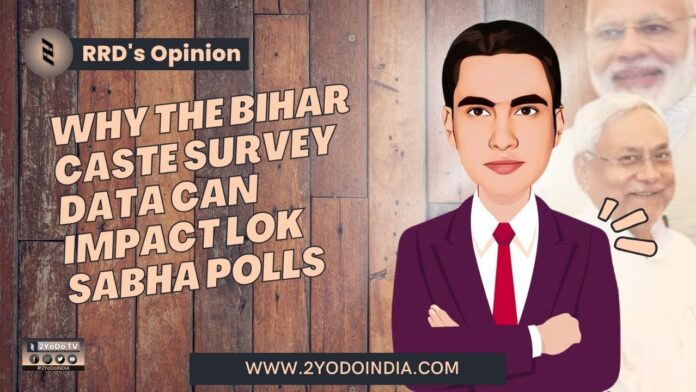Bihar government recently made public the results of a comprehensive caste survey, shedding light on the intricate social fabric of the state. This data is significant for many reasons and has the potential to impact not only Bihar’s political but also the dynamics of future Lok Sabha (Indian Parliament) elections.
As the caste survey confirms the predominance of the Other Backward Classes (OBCs) and Extremely Backward Castes (EBCs) in Bihar, collectively constituting a substantial 63.13% of the state’s population, which is over 130 million people.
This revelation underscores the importance of these social groups in Bihar’s socio-political context.
It also reinforces their significance for affirmative action policies aim at addressing historical inequalities.
The survey highlights the diversity of Bihar’s population.
It reveals that Muslims account for 17.7%, Schedule Castes make up 19.65%, and unreserve categories, including Brahmins, Rajputs, Bhumihars, and Kayesthas, constitute 15.52%.
Post by @2yodoindiaView on Threads
All these numbers provide a comprehensive picture of Bihar’s demographic composition.
Politically, the caste survey reaffirms the dominance of Tejashwi Yadav’s family and the Rashtriya Janata Dal (RJD).
Yadavs, with their 7 sub-castes, have emerge as the single-largest caste group, comprising 14.26% of the population.
This result underscores the continue influence of the Yadav community in Bihar’s politics.
The survey also highlight on the political success of Nitish Kumar, the chief minister of Bihar.
Despite his own Kurmi caste representing only 2.87% of the population, Nitish Kumar has maintain electoral support among EBCs and Mahadalits, allowing him to stay ahead of other political leaders in Bihar.
Nitish Kumar strategic alignment of development initiatives with target social welfare programs for marginalize groups has play a important role in this political equation.
EBCs, representing over 36% of Bihar’s population and comprising more than 100 castes, have consistently support Nitish Kumar.
Timing is another important aspect of this caste survey’s release.
It comes just six months before the Lok Sabha elections, making it a potential game-changer in the political margin.
Regional parties in Bihar hope that the survey will create a political shift similar to the one seen in the 1990s when the Mandal Commission report, which recommend increase OBC reservation in jobs, alter the national political narrative.
This led to the rise of leaders like Mulayam Singh Yadav in Uttar Pradesh and Lalu Prasad Yadav in Bihar.
The data also could potentially ignite a similar social and political transformation that benefits regional parties more than national parties like the Bharatiya Janata Party (BJP) and Indian National Congress.
As the BJP has made efforts to engage in social engineering in Bihar, the caste survey has reveal the limitations of such a strategy.
For example, it indicates that the Kushwaha (Koiree) caste, which the BJP has sought to mobilize, represents only about 4.21% of the population.
Also, historical support for Nitish Kumar among Kushwahas may be difficult to overcome.
The caste survey in Bihar has also spark discussions about the possibility of similar surveys in other states.
Both the Congress and the BJP have been cautious about raising this issue in the past, but regional parties are now demanding nationwide caste census, recognizing its electoral significance.
Bihar caste survey is a comprehensive data source that can reshape political dynamics in the state.
It has the potential to influence electoral strategies by emphasizing the importance of catering to the needs of the largest social groups for political advantage.
Also, it may challenge the BJP’s focus on Hindutva and nationalism by highlighting the enduring relevance of caste politics in Indian elections.
Rahul Ram Dwivedi (RRD) is a senior journalist in 2YoDoINDIA.
NOTE : Views expressed are personal.





